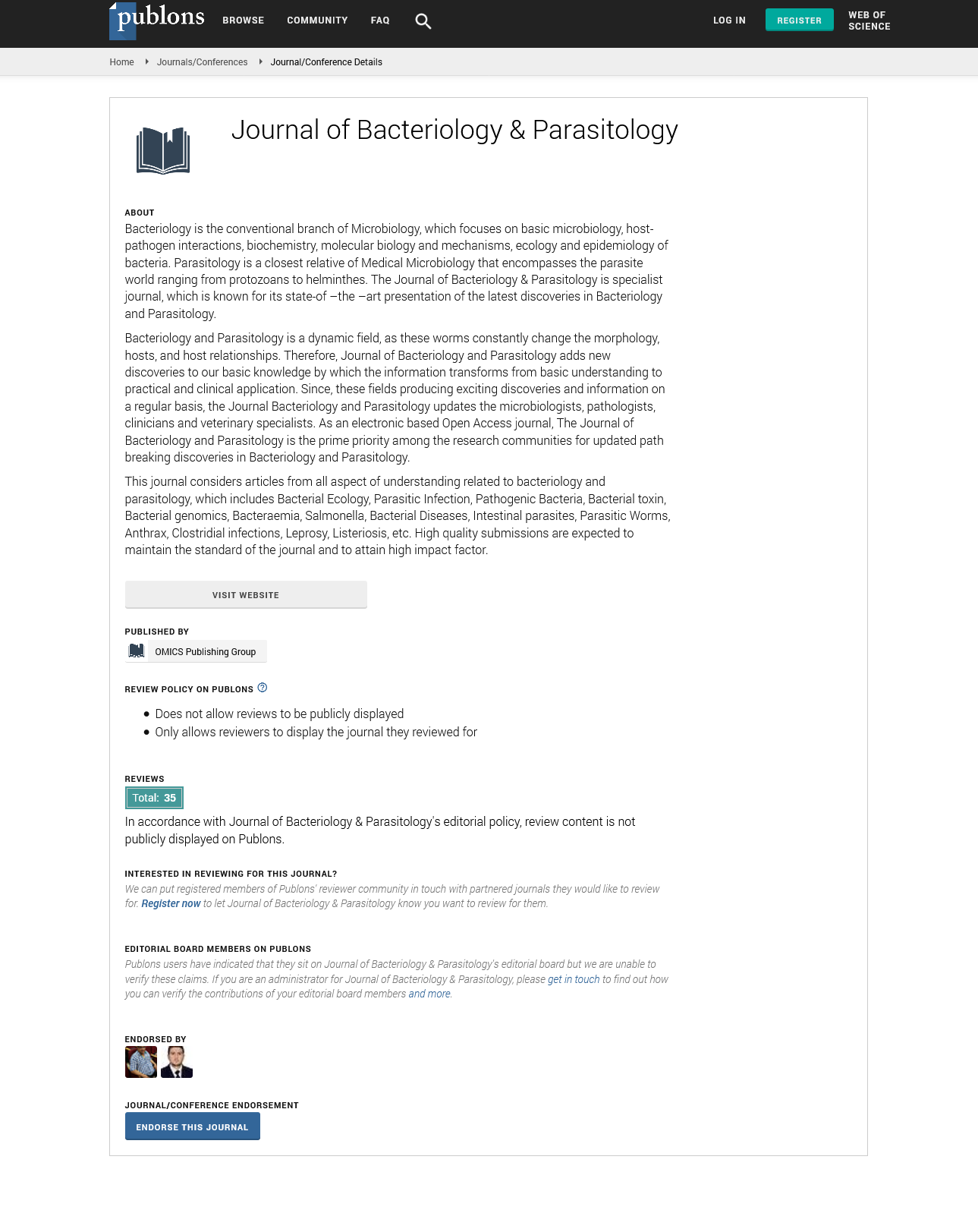Indexed In
- Open J Gate
- Genamics JournalSeek
- Academic Keys
- JournalTOCs
- ResearchBible
- Ulrich's Periodicals Directory
- Access to Global Online Research in Agriculture (AGORA)
- Electronic Journals Library
- RefSeek
- Hamdard University
- EBSCO A-Z
- OCLC- WorldCat
- SWB online catalog
- Virtual Library of Biology (vifabio)
- Publons
- MIAR
- Geneva Foundation for Medical Education and Research
- Euro Pub
- Google Scholar
Useful Links
Share This Page
Journal Flyer

Open Access Journals
- Agri and Aquaculture
- Biochemistry
- Bioinformatics & Systems Biology
- Business & Management
- Chemistry
- Clinical Sciences
- Engineering
- Food & Nutrition
- General Science
- Genetics & Molecular Biology
- Immunology & Microbiology
- Medical Sciences
- Neuroscience & Psychology
- Nursing & Health Care
- Pharmaceutical Sciences
Mechanical properties of Plasmodium falciparum infected haemoglobinopathic red blood cells
12th International Conference on Infectious Diseases, Bacteriology and Antibiotics
May 23, 2025 | Webinar
Mr. Victor Lengyel
Germany
Scientific Tracks Abstracts: J Bacteriol Parasitol
Abstract:
The biomechanical mechanisms underlying the protective effect of sickle cell trait against severe malaria were investigated by comparing the mechanical properties of wild type (HbAA) and sickle (HbAS) red blood cells infected with Plasmodium falciparum at distinct intraerythrocytic maturation stages. A microfluidic platform mimicking capillary vessel cross-sectional dimensions and physiological flow velocities enabled the visualization of individual RBCs at 36,000 frames per second. The RBCs were biinarized, ellipse fitted, and the temporal evolution of ellipse height was analysed with an exponential function based on the standard linear solid (SLS) model to quantify dynamic shape recovery after cell deformation in the constriction, specifically measuring initial elastic recovery and characteristic recovery time (τ). Uninfected HbAS RBCs exhibited significantly impaired initial elastic recovery and a prolonged viscoelastic recovery time τ compared to wild type cells, consistent with known cytoskeletal dysfunctions. Following P. falciparum infection, wild type RBCs showed a progressive, stage dependent reduction in initial elastic recovery and an increase in τ, displaying a distinct mechanical response from infected sickle RBCs which show no consistent increase for tau during infection. Notably, at ring stage, only wild type RBCs exhibited diminished initial elastic recovery, potentially reflecting differences in cytoskeletal modulation due to altered phosphorylation and protein export in sickle cells. These findings indicate that sickle RBCs undergo distinct, stage-dependent biomechanical remodelling during malaria infection. Further studies employing targeted protein knockouts could elucidate the molecular determinants underlying these protective biomechanical phenotypes.
Biography :
Victor Lengyel is a medical doctoral student at the Lanzer Group of the department of Parasitology, University Heidelberg. The presented work is cooperation between the parasitology department of Prof. Lanzer and the biophysical department of Prof. Tanaka funded by the DFG SFB 1229. Victor Lengyel finished his medical studies at the University Heidelberg in November 2024.

